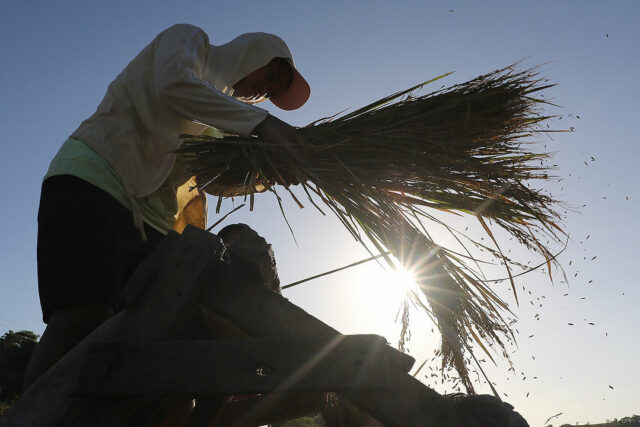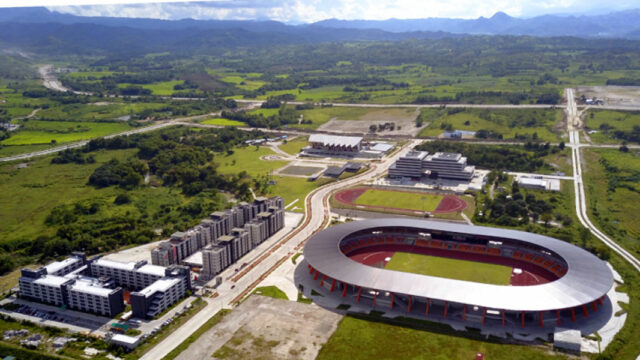BSP set to hike 2023 inflation forecast
THE BANGKO SENTRAL ng Pilipinas (BSP) will likely raise its average inflation forecast for this year after the faster-than-expected headline print in January.
During a Senate hearing on Wednesday, BSP Deputy Governor Francisco G. Dakila, Jr. said that the Monetary Board “will take the January inflation into account” as they hold a policy meeting today (Feb. 16).
“The January inflation was higher than what we had projected. The BSP’s projection for January was only up to 8.3%, but inflation rose to 8.7%, so it was above our projected range,” Mr. Dakila said in mixed English and Filipino.
Asked if the 4.5% inflation forecast for 2023 will be increased, Mr. Dakila said: “Most likely.”
Headline inflation quickened to 8.7% in January from the 8.1% in December, marking the highest in 14 years or since the 9.1% in November 2008.
It was above the BSP’s forecast range of 7.5-8.3% and marked the 10th consecutive month inflation was above the central bank’s 2-4% target.
The BSP is widely expected to hike borrowing costs today. In a BusinessWorld poll conducted last week, nine analysts said they expect a 50-basis-point (bp) rate increase, while eight analysts anticipate a 25-bp increase.
“By next year, our projection is that inflation would be within target because our sources of inflation are driven by supply, but we still see some spillovers to the demand (side),” Mr. Dakila added.
At the last Monetary Board meeting in December 2022, the BSP said it expects inflation to ease to 2.8% in 2024.
The BSP raised interest rates by 350 bps since May 2022, bringing the overnight repurchase rate to a 14-year high of 5.5% last year.
The central bank is also ready to adjust policy stance as necessary “to keep further second-round effects at bay and prevent inflation expectations from becoming disanchored,” BSP Governor Felipe M. Medalla said earlier.
THREAT TO RECOVERY
Meanwhile, the government should manage inflation before it threatens economic recovery, Philippine Chamber of Commerce and Industry (PCCI) President George T. Barcelon said.
“We cannot allow the 8.7% inflation rate to increase any further, with the help of the combination of monetary tools and addressing supply problems, especially agricultural products,” he said during a BusinessWorld Insights webinar on Wednesday.
“If unattended, this will really be a big threat to our country’s economic recovery. Not to mention that it would worsen the plight of the poor sector of our country,” he added.
In January, inflation for the bottom 30% income households quickened to 9.7%, from the 9.4% print in December and 4% last year.
The Philippine economy this year faces heightened risks from elevated inflation, tighter policy, a looming global recession and geopolitical uncertainties. Economic managers are targeting 6-7% gross domestic product (GDP) growth this year, slower than the 7.6% GDP expansion in 2022.
Mr. Barcelon also said the government should continue to ramp up infrastructure projects under its “Build, Better, More” program.
The government should also become aggressive in attracting more foreign investments following the passage of key reform measures such as the amendments to the Foreign Investment Act, Retail Trade Liberalization Act, and Public Service Act.
“What needs to be highlighted is that the centerpiece of our country’s economic program really depends on the well-being of the micro, small, and medium enterprises (MSMEs),” Mr. Barcelon said.
MSMEs account for 99% of businesses in the country.
Jose Antonio S. Vilar, Sage Solutions Philippines, Inc. chief marketing office, urged the government to address high power costs in the country.
“One of the biggest problems here is power. It is costly compared to other parts of the world. There is a huge shortfall, which hopefully, the government, the Senate and the House could come up with laws that will be easier for companies set up power plants, allowing healthy competition,” he said. — Keisha B. Ta-asan and Revin Mikhael D. Ochave















